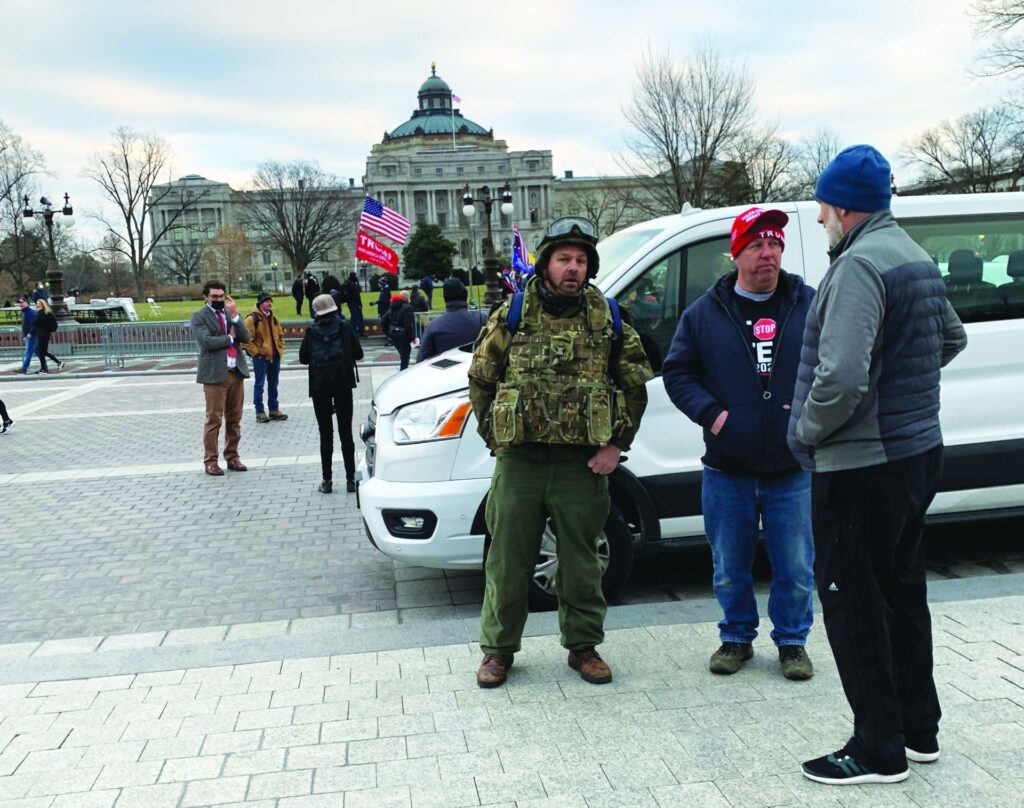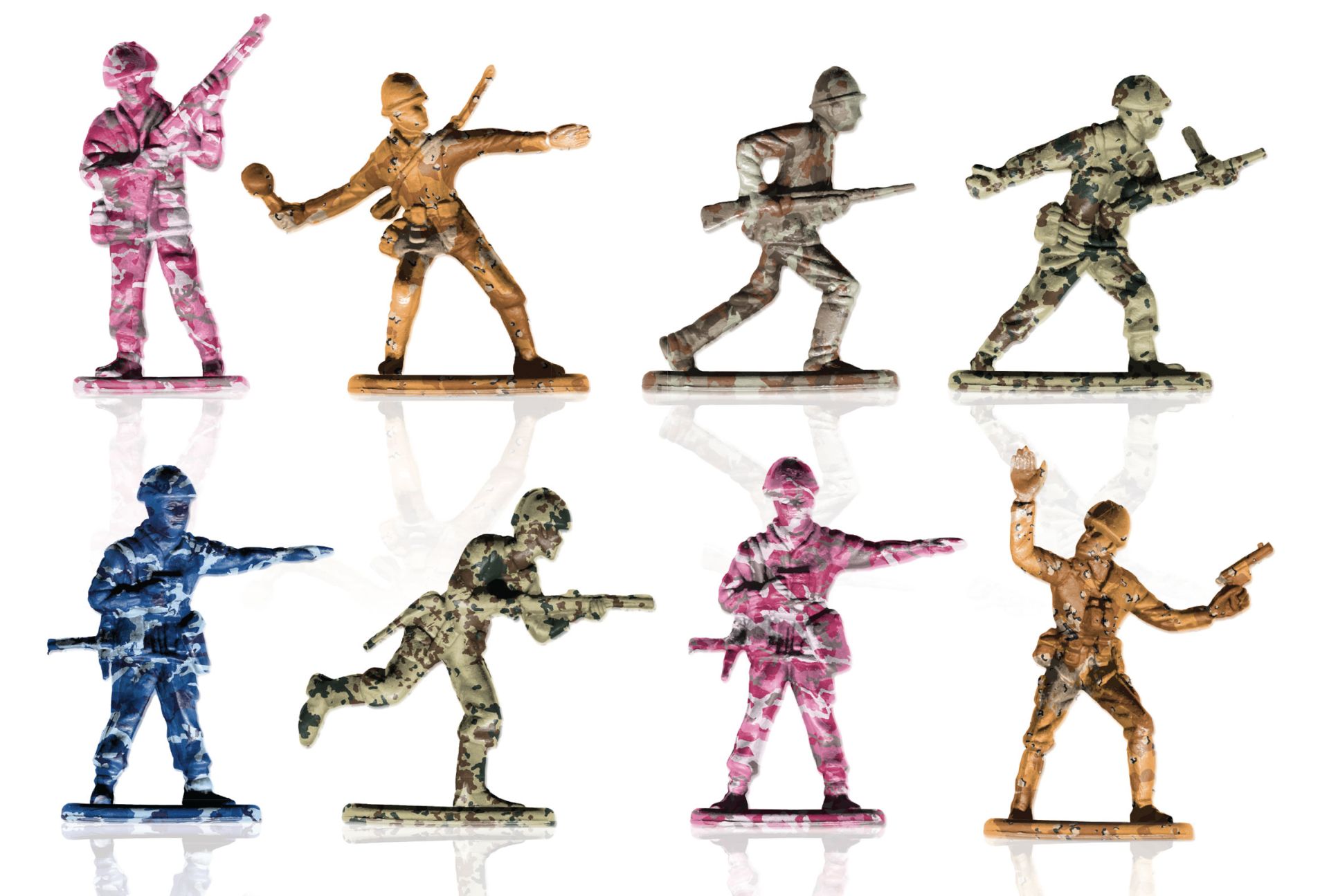Listen to this story
If you have seen any footage from a battlefield recently, you have probably come across it, maybe without noticing, which is kind of the point: a unique, seven-color camouflage pattern of muted greens and browns.
Hundreds of thousands of United States troops wear it, as do jihadists in places like Syria. The same goes for Ukrainian troops and the mercenaries of the Wagner Group on the Russian side of that war. Before Kabul fell in 2021, some Afghan forces sported it, and now Taliban fighters do, too, having raided the ex-government’s storage facilities. Taking photographs on the outskirts of the U.S. Capitol on Jan. 6, 2021, I noticed it everywhere among the crowd: on fatigue-style pants and shirts, on backpacks and pouches, on helmets and ill-fitting body armor. When 26,000 National Guard soldiers deployed to Washington starting the next day, they wore the same camouflage.

Create a free account to continue reading
Already a New Lines member? Log in here
Create an account to access exclusive content.



